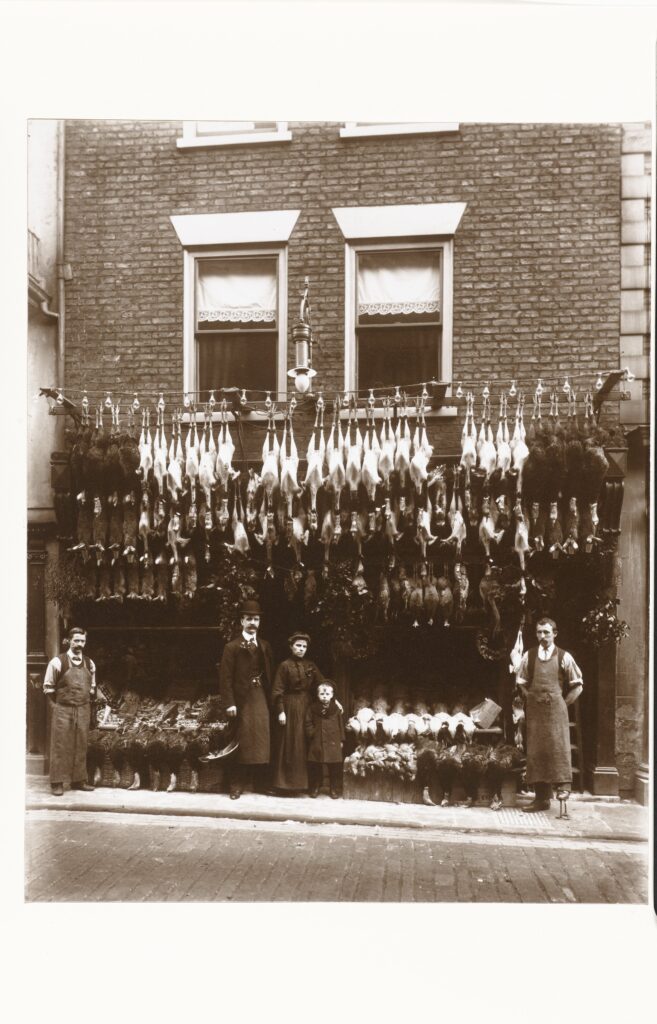How USDA rules harm America’s smaller livestock slaughter and processing plants, farmers and ranchers, and consumers
On an icy Thursday night this past February, more than 100 local residents gathered at a crowded town hall meeting in Dexter, Michigan, to discuss how to tackle a seeming intractable problem that’s long vexed the local farming community: the lack of government-inspected livestock slaughter and processing facilities in the area.
Washtenaw County, which includes Dexter, lies an hour west of Detroit and is home to more than 300,000 people. Its largest city and county seat, Ann Arbor, is home to the University of Michigan. Despite its population and location, local farmers who want to have their livestock slaughtered and processed for sale (turned into steaks, sausages, deli meat, lard, meat pies, and other edible portions) still must truck their animals outside the county to do so.
“While [our] farmers pour their heart and energy into raising their animals, sometimes for the slimmest of margins, they face four-hour round-trip drives and [processors] who know them as just another name on a waitlist,” a local farmer explained to fellow attendees, as reported in a recent article on mlive.com (“The Movement for More Local Meat in Washtenaw County Grows”).
Access to local slaughter and processing facilities benefits local farmers and consumers and strengthens local economies. It has other benefits, too. Processing livestock locally eliminates the stress and discomfort livestock face during a long drive to far-off facilities. Reducing transit miles means farmers burn less fossil fuel.
“[A] local meat system requires a nearby meat processing facility,” local poultry processor Wendy Banka told the Sun Times News. “Without a local meat processing facility, we can’t have local meat. It’s as simple as that.”

The System
Given both the obvious problem and the benefits and demand for locally raised meat, having locally raised livestock slaughtered locally for sale by local grocers and restaurants and others seems a logical choice. But, thanks to federal regulations, getting a small processing plant off the ground is a key hurdle. Operating one can be an even bigger challenge.
The COVID-19 pandemic created massive supply-chain issues at the nation’s largest meat plants and grocers, which spurred many consumers to buy meat from smaller, local processors and the local farmers and ranchers they serve. Many small plants around the country sought to ramp up their capacity to help meet suddenly exploding consumer demand for their products. While COVID both exposed and exacerbated the shortcomings in the nation’s federal meat-inspection scheme — and the laws and regulations that uphold that system — these problems, like those in Washtenaw County, have existed for generations.
“The lack of inspected slaughterhouses in many areas of the country is one of the biggest problems for small-scale livestock farmers — and, as a result, one of the biggest barriers to the availability of local, sustainably raised meat, despite strong consumer demand for such meat,” says Judith McGeary, a Texas rancher and attorney who leads the nonprofit Farm & Ranch Freedom Alliance (FARFA).
The steep decline in the number of such plants has taken place over the past few decades, during which time the United States has lost thousands of smaller processing plants, many in rural America. While the cause appears at first glance to be consolidation — thousands of small plants replaced by hundreds of giant ones — that consolidation is largely a function of federal laws and regulations skewed to favor those large processors.
Though lawmakers in Washington, D.C. are increasingly recognizing the need for real reforms of the federal meat inspection system, the systemic “reform” many prefer is to bring more small processing plants under federal inspection. Instead of ramping up capacity, some fear more federal involvement in small plants could instead mean fewer small processors. That raises fears federal reforms could simply result in more regulations for small processors without offering any attendant benefits for them, their farmer and rancher customers, or American consumers. The experiences of many small processors, including those detailed in this article, reveal deep flaws in a slaughter-and-processing regulatory system that is stacked against them by design and effect.
While some exceptions exist, most farmers and ranchers who want to sell meat commercially in the United States must have their livestock slaughtered in an approved facility inspected by the USDA’s Food Safety & Inspection Service (FSIS) or an equivalent state-inspected facility. That’s largely true whether a farmer or rancher wants to sell their meat directly to consumers, to groceries and restaurants, or both. To be sold commercially, meat from livestock slaughtered in those facilities also must be processed in an FSIS-inspected processing plant or state equivalent. The term “processing” may refer to anything from minimal processing (such as cutting up animals into saleable, wrapped portions) to more labor-intensive activities (such as grinding, seasoning, cooking or curing).
Though federal law requires both slaughterhouses and processing plants to be inspected every day they operate, inspection requirements are far more pervasive for slaughter facilities than for processors. The law requires FSIS inspectors to be present at all times when animals are being slaughtered. They’re no mere observers. In fact, inspectors are required to visually examine every animal — both before and after slaughter — that comes to a facility. FSIS inspectors are only required to be present at processing plants — which turn carcasses and animal parts into everything from raw bacon to cured lamb jerky to canned spaghetti and meatballs — on a daily basis. In other words, while a slaughter plant of any size must have at least one FSIS inspector present whenever it’s slaughtering, by contrast, FSIS inspectors are usually assigned to visit several processors as part of a daily circuit.
FSIS inspectors who find a plant of any size to be in violation of one or more agency regulations typically address the matter by issuing a Noncompliance Record (NR). “An NR notifies the establishment that there is a noncompliance and that they should take action to remedy the situation and prevent its recurrence,” FSIS explains.

FSIS defines “very small” slaughter facilities as those having fewer than 10 employees or less than $2.5 million in annual sales, and “small” plants as ones with anywhere from 10 to 499 employees. Even the largest plants described in this article meet the definition of “small” or “very small” plants. For example, the small White Oak Pastures red-meat processing plant in rural Georgia, owned by regenerative farming and grass-fed beef pioneer Will Harris, has about 40 employees.
In comparison to most other facilities described in this article, Harris’s plant is big. But “big” is relative. “To walk through a very small, 5,000 square foot plant may take less than a minute,” a recent study by the Niche Meat Processor Assistance Network (NMPAN) details. “A plant this size may process eight to ten cattle per day.” But even that “very small” example is larger than some of the plants detailed in this article. One such plant owner, Jane Levan, operated a facility of around 1,200 square feet.
Contrast those numbers with data on the nation’s largest processors — the so-called “Big Four” of JBS, Tyson, Cargill and Marfrig — each of which owns dozens of plants employing tens of thousands of workers. “On the opposite extreme is an 850,000 square foot plant that may process 5,600 cattle per day and could take you several hours to walk through,” the recent NMPAN report details. These and other giant plants — many of which were forced by COVID outbreaks to shut their doors temporarily during the early peaks of the pandemic in 2020 — supply roughly 80 percent of the nation’s beef, along with similarly high percentages of its pork and chicken.
Prior to operating as a USDA-inspected processor, a facility owner of any size must apply to FSIS for a Grant of Inspection (GOI). A plant must also develop written sanitation procedures and create what’s known as a HACCP plan. The HACCP (Hazard Analysis and Critical Control Point) plan requirement means every slaughter and processing facility must identify, control and mitigate against potential biological, chemical and physical food-safety hazards the plant determines may arise in their plant. After a plant has conducted the hazard analysis and identified critical control points, it must establish the following: limits for each control point, monitoring procedures, corrective actions and verification and recordkeeping procedures.
If FSIS approves a GOI, it provides a facility with a conditional grant of inspection of up to 90 days and assigns one or more FSIS inspectors to the facility. Only then may federally inspected meat from the plant be sold to consumers, grocers, restaurants, caterers and others. But the conditional grant also requires the facility to validate its HACCP plan, which means a slaughter or processing plant must ensure “everything you’ve implemented so far in your food safety plan is correct and leads to producing safe food.”
The Plight of Small Processors
In 2019, Jacob Wingebach, owner of Sandhills Beef Company, a very small custom-exempt (not subject to regular inspection) meat-processing plant in rural Mullen, Nebraska, applied for a GOI. Wingebach, a former government nuclear engineer and seasoned nuclear regulator, wanted to grow his business and sell meat commercially. But the USDA rejected his application. Wingebach and the expert he’d hired to help him complete it, Dr. Michael Fisher, a former Public Health Veterinarian with FSIS, believed the reasons the agency had rejected Sandhills’ application were arbitrary and did not comply with federal law. (Sandhills closed in 2022. Wingebach says the USDA’s denial of his GOI played a role in the closing.)
Fisher, a no-nonsense, retired Army colonel who spent nearly three decades working in FSIS’s Office of Field Operations (OFO) and Office of Policy and Program Development (OPPD), started out with the agency in 1985, serving as a veterinary medical officer in a slaughterhouse. Years later he was part of the group that implemented the agency’s HACCP system. Since retiring from FSIS in 2014, Fisher’s been a leading critic of the agency.
As Fisher explains, FSIS wanted Sandhills to provide, as part of its GOI application, information that is ultimately required by regulation — down the road — but is not required as part of the application process. Fisher helpfully compares the GOI to a driver’s license — a government certificate that allows a person to drive a motor vehicle — but notes it’s wholly separate from other requirements such as vehicle inspection. But Fisher, by way of analogy, says FSIS basically added a vehicle inspection requirement to Sandhills’ driver’s license application. This, Fisher says, means FSIS had added requirements to his application process, beyond what the law requires or allows.
Some argue that FSIS’s denial of Wingebach’s GOI application has nothing to do with food safety or public health.
“I think Jacob Wingebach’s [story] is a glaring example of how awful FSIS is and how they work so hard to discriminate and retaliate against the small plants,” says Mike Callicrate, a nationally renowned rancher and FSIS-inspected processor.
Critics argue FSIS’s rejection of Wingebach’s application is largely the result of the agency’s inability or unwillingness to hire and assign sufficient numbers of inspectors to small, rural meat plants across the country.
“If you have to have an inspector on-site at all times during slaughtering and processing, then you are entirely at the mercy of the agency’s staffing decisions,” says McGeary.
“As far as I’m concerned, when it comes to Jacob, that’s it in a nutshell,” says Dr. Fisher.
Jane Levan, who owned Dewberry Hills Farms in rural Lexington, Texas, says the agency seemed unwilling at first to provide inspection services. “The frontline inspector considered us too remote,” Levan says, while noting FSIS is required to provide inspection staff at an approved plant regardless of the number of hours of inspection work that plant requires each week. “She felt it would be difficult to staff us because of our location — we’re not close to a large city — and she strongly implied USDA wouldn’t be willing to staff us unless we had 40 hours per week of work.”
Though FSIS classifies dozens of locations around the country as “difficult to staff,” current and former agency officials say these staffing challenges don’t impact the agency’s ability to provide inspection services to small plants. An FSIS spokesperson denies the agency has ever delayed or denied approving a GOI because it could not hire and place an inspector at a particular facility.
Though obtaining a GOI allows a processor to get their business up and running, many small plants that are approved to operate and do receive FSIS inspection run into countless hurdles and roadblocks once their plants are operational. Processors share troubling tales of FSIS inspectors who they say have enforced phantom regulations, failed to put costly directives in writing and seemingly retaliated against processors for exercising their rights to appeal written complaints.
Jane Levan’s Dewberry Hills Farm, which obtained FSIS inspection (but, like Sandhills, closed last year), says the same frontline inspector who visited her plant before she obtained her GOI also pushed her to swap out the stainless-steel tables she’d use to process poultry. Levan says the inspector also told her she’d need to install an air blower to keep flies out of her plant. Levan says the blower wasn’t effective. She’d have preferred to place large fans outside the plant, which would have been more effective and cost far less money than the air blower, which cost around $4,500 to purchase and install. It turns out these changes were not required by any FSIS regulations.
“I know that sounds very trivial, but that’s [money] we didn’t have to spend,” Levan says. “That’s peanuts for a huge plant. But it’s a huge obstacle for a small plant like ours trying to get off the ground.”
Levan’s travails would sound familiar to John Edwards. His business, Trackside Butcher Shoppe in rural Campbellsburg, Kentucky, slaughters and processes around 65 cattle, 25 hogs, and 5-10 lamb each week. Its 25 employees and one FSIS inspector serve more than 1,500 farmers annually. While many of those farmers live in and around Campbellsburg, some travel more than two hours to Trackside.
Edwards says that, beginning in 2016, a “rogue” FSIS inspector who “was bound and determined to make my life miserable” did just that. Among other issues, Edwards cites the inspector’s constant barrage of alleged violations and her typically costly proposed solutions to those alleged violations. Edwards says he learned only later that neither his purported violations nor the inspector’s proposed remedies were grounded in FSIS regulations.
“She’d come to me and tell me there was an issue, and I’d try to fix it,” Edwards says. “Only later, I learned there was no regulation she was enforcing.” For example, Edwards says the inspector told him that Trackside’s plant lighting was insufficient. “So we upgraded it,” he says. “But that still wasn’t good enough. She’d say, ‘You need more lighting on this floor.’ It still wasn’t good enough. It was things like this that were a constant battle.”
At the time, Edwards (like the inspector) was relatively inexperienced with FSIS regulations. Since she was the person paid to know and enforce the rules, Edwards says he took the inspector at her word. Only as he sought advice from other processors and experts did Edwards learn some of the rules she was enforcing — including her repeated verbal requests to improve plant lighting — weren’t based on any regulations.
Edwards says the problematic inspector was eventually reassigned and that he’s grateful for her replacement, an FSIS inspector who Edwards describes as reasonable and easy to talk to.
Challenging the System
The phantom regulations FSIS inspectors told Levan, Edwards and others to follow are hardly unprecedented. In 2019, a Montana Standard investigation detailed how one inspector, Jeffrey Legg, had for years enforced a host of regulations that did not exist, costing small processors in the state untold money and causing countless headaches.
While Levan and Edwards needlessly spent thousands of dollars to follow errant directives they received, others have pushed back. But they’ve found that doing so — like meat processing itself — is not for the faint of heart.
Mike Smucker is president of Smucker’s Meats in Mount Joy, Pennsylvania, located near the state capital in Harrisburg. The company, which has 45 employees, serves 200-300 farmers who market their own beef, bison and pork, many of them directly to the consumer. The company slaughters and processes more than 200 animals each month. Some farmers bring livestock to Smucker’s from as far away as New York State and Virginia.
While Smucker says nearly all of the in-plant FSIS inspection personnel have been excellent, he’s still had his share of problems with the agency. FSIS inspectors appeared sometimes to issue new NRs in retaliation for his having appealed prior NRs. Though he couldn’t prove the agency’s actions were retaliation for his appeals, Smucker says it sure felt that way.
Levan, who learned after her early experiences to push back on FSIS directives that seemed unaligned with FSIS regulations, shares a similar tale. “If I appealed any of the NRs” her company received, Levan says, “or I pushed back at all, the frontline supervisor would come into our plant and look through our HACCP plan to find things we could be written up on.” In other words, exercising one’s rights to dispute an NR can beget more NRs.
Greg Gunthorp of Gunthorp Farms in LaGrange, Indiana, a mid-sized rancher and processor who’s a leading voice among his peers in the industry, says the lesson in Smucker’s case and others is that “if you push back, it’ll get worse first, before it gets better.… If you push back, USDA will make it seem like you’re not for animal welfare or food safety,” he says. “The only thing that scares them is media and congressmen. That’s it. There’s no checks and balances other than that.”
As Dr. Fisher explains, FSIS inspectors at very small plants in rural America often receive little or no oversight from their supervisors. “Inspectors assigned to small and very small establishments are like free agents,” Fisher says. “They can do whatever they want, as long as they do not create controversy or problems for FSIS management.”
“When I was doing my due diligence whether or not to build a plant, I spent a lot of time in other peoples’ plants,” says Will Harris. “And I saw a dynamic that troubled me.” He compares some of the inspectors he saw in those other plants to the proverbial “100-pound weakling with a nuclear device: they can’t beat anybody up, but they can blow it all up.”
That’s different than in a larger plant, where the presence of and oversight from peers can prove a moderating influence. “The thing that’s really hard for microprocessors like us,” Levan says, is that “in a big plant, inspectors have peers who can monitor and check their behavior. But out here an inspector can act like this is his petty kingdom.”
“I don’t know that I would wish USDA inspection on my worst enemies,” says Gunthorp, who estimates 80 percent of USDA staff are good, 10 percent are lazy, and 10 percent are crazy. “And they have no means whatsoever to deal with the lazies or the crazies.”
The key lesson learned by processors who’ve lived through these sorts of tensions with FSIS is that the only sure way to distinguish between an inspector’s whims and potential violations of FSIS regulations is to demand that an inspector document complaints. Levan, for example, says she learned the “magic words” processors must use when an inspector has a complaint: first, “show me the regulation”; second, “put it in writing.”
Even in the face of these obstacles and challenges, plenty of people — like those who braved icy roads in Dexter, Michigan, in February — are still interested in opening small, inspected meat-processing plants. Demand for those services among farmers and ranchers is strong. Consumer demand is, too. But FSIS’s overly burdensome regulation of small processors continues to hamper small-scale meat processors, all while ensuring their larger competitors thrive.
Baylen Linnekin is an attorney, an expert in agricultural and food regulations, and a board member at the Farm-to-Consumer Legal Defense Fund. He is the author of Biting the Hands that Feed Us: How Fewer, Smarter Laws Would Make Our Food System More Sustainable.














